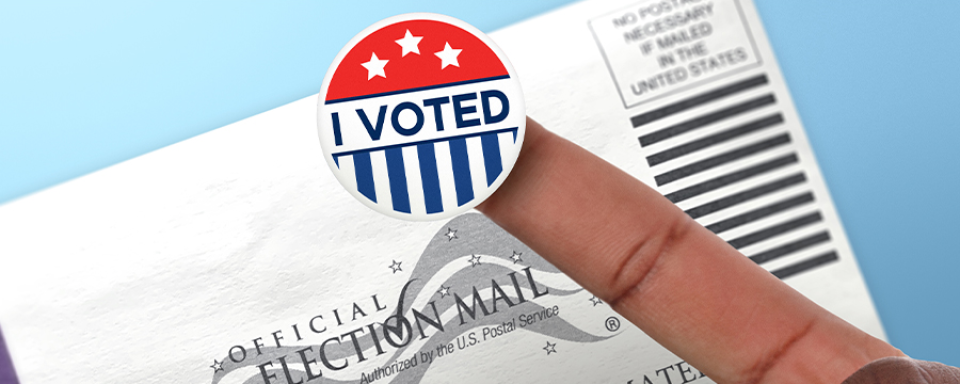Vote by Mail and the Postal Service: A Primer
June 1, 2021 (RISC-WP-21-004)
- The use of vote by mail has grown steadily in the United States.
- The vote-by-mail process is decentralized, with laws and procedures varying from state-to-state.
- The patchwork of processes creates challenges for the U.S. Postal Service, election officials, and voters.
The portion of Americans who vote by mail had been growing steadily even before the novel coronavirus disease (COVID-19) pandemic led to millions of voters casting mail ballots for the first time. In the 2020 general election, the Postal Service delivered more than 135 million ballots to or from voters.
In this white paper, the OIG provides an overview of vote-by-mail processes, the variability of those processes, and challenges for the Postal Service and others.
The Constitution gives states the power to determine the time, place, and manner of elections. As a result, the vote-by-mail process is decentralized, with a patchwork of laws and procedures from state-to-state. Key aspects of the vote-by-mail process are frequently administered at the local level.
The variation in processes creates challenges for the Postal Service, which must manage the handling and delivery of ballots on a national scale. Among the challenges: election officials do not always follow best practices when designing ballot envelopes or entering ballots into the mail, which can make it more difficult for the Postal Service to process them efficiently. In addition, many deadlines for requesting and returning ballots may not allow sufficient time for blank ballots to travel through the mail to voters and for completed ballots to reach election officials in time to be counted. As a result, USPS must take extra measures to expedite ballot delivery.
Also, some states require ballots to be postmarked in order to be counted, even though ballots are often among the classes of mailpieces that would not ordinarily receive a postmark. To accommodate the election laws, the Postal Service alters its postmarking practices during elections.
Bryant Switzky, Jen Daehn, Joanna Wu-Gerhardt, and Christopher Backley contributed to this report.

